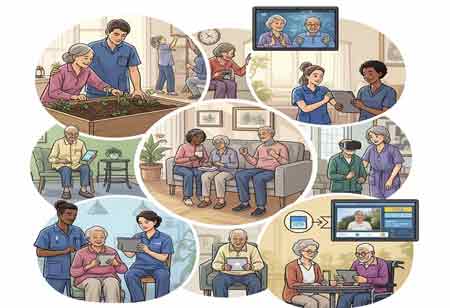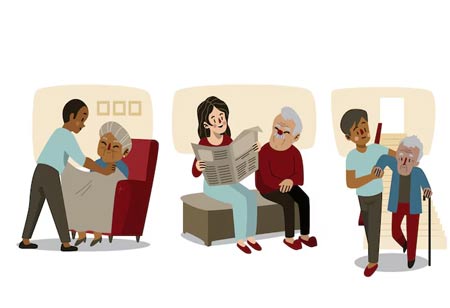Thank you for Subscribing to Eldercare Review Weekly Brief
Redefining Aging Through Flexible, Human-Centric Care
The global population is aging, prompting a shift to personalized aging with flexible care models that enhance quality of life, dignity, and independence for older adults.

By
Eldercare Review | Thursday, August 21, 2025
Stay ahead of the industry with exclusive feature stories on the top companies, expert insights and the latest news delivered straight to your inbox. Subscribe today.
Fremont, CA: The global population is aging at an unprecedented rate. By 2050, one in six people will be over the age of 65, marking a significant demographic shift that necessitates a reevaluation of approaches to senior living. The traditional 'one-size-fits-all' model of care is giving way to a more nuanced and empowering approach: personalized aging, driven by flexible care models that cater to individual needs. This paradigm shift is not just about extending lifespans, but about enhancing the quality of life, dignity, and independence of older adults, offering them a more fulfilling and dignified life in their golden years.
The Core of Personalized Aging: Flexible Care Models
Flexible care models are emerging as the foundation of personalized aging, offering an adaptive approach to senior care. Unlike traditional, one-size-fits-all service packages, these models provide a continuum of care that evolves in response to an individual’s changing needs and preferences. Central to this approach are customized care plans—comprehensive, living documents developed through thorough assessments that take into account not only medical conditions, but also lifestyle choices, cultural backgrounds, personal interests, and long-term goals. These plans are routinely reviewed and refined in collaboration with the individual and their family to ensure they remain relevant and practical.
In addition to tailored care plans, seniors are increasingly offered à la carte services, granting them the flexibility to select only the support they require. Whether it is assistance with daily activities such as meal preparation and transportation, or more specialized care for chronic illnesses or cognitive conditions, this model fosters greater independence and cost efficiency. Furthermore, many contemporary senior living communities integrate independent living, assisted living, and memory care within the same environment, enabling residents to age in place without the disruption of relocating as their care needs progress.
The growing preference among older adults to remain in their own homes has also spurred a significant expansion of home-based care. Innovations such as telehealth consultations, in-home nursing, and mobile diagnostics now bring essential medical services directly into the home. Remote monitoring technologies, including wearable devices and smart home sensors, enhance safety and wellness by tracking vital signs, detecting falls, and issuing medication reminders. Complementing these medical services are on-demand offerings, including personal care, homemaking, and companionship, all delivered with flexible scheduling to accommodate each individual's lifestyle and preferences.
Key Innovations Shaping the Future
The personalized aging movement, driven by advanced technology such as Artificial Intelligence (AI), companion robots, virtual assistants, smart home technology, wearable technology, digital platforms for communication and engagement, and intergenerational programs, is a beacon of hope for the future of senior care. These technologies enhance resident satisfaction, improve health outcomes, promote greater independence and dignity, and reduce loneliness and social isolation. Smart home technology, wearable technology, digital platforms, and intergenerational programs foster meaningful interactions between seniors and younger generations. Flexible care models offer numerous benefits, including increased satisfaction, improved health outcomes, and support for family caregivers.
The future of senior living is undoubtedly personalized, flexible, and technologically advanced. A collaborative approach involving healthcare providers, technology developers, policymakers, and families will be crucial to overcoming challenges and fully realizing the potential of personalized aging. By prioritizing the unique needs and aspirations of older adults, we can create environments where they not only receive excellent care but also maintain their independence and live with dignity and purpose.






